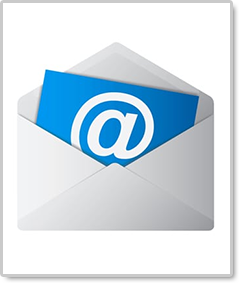 Despite doing all the right things, you find that your email open rates are disappointing. This can be very frustrating and the natural question is what could be holding you back, and how to overcome these impediments?
Despite doing all the right things, you find that your email open rates are disappointing. This can be very frustrating and the natural question is what could be holding you back, and how to overcome these impediments?
If your marketing portfolio includes emailings or a monthly eNewsletter, you have probably heard the term "open rate." Open rate refers to the percent of emails that are recorded as having been opened by the recipients, versus the number of emails that were actually sent. Note that this definition includes "recorded as having been opened" rather than "have actually been opened." This is because the nature of measuring email open rates is not an exact science.
The reason is that the standard method for measuring email open rates is to include an almost invisible 1 pixel by 1 pixel tracking image in the body of the email, which when the email is viewed, the server where this image resides captures that this image is being fetched, and records the data associated with the tracking code. The problem here is that each mail system handles this viewing of images differently. And in some cases, the email recipient may have even turned off their images in their mail. As a result, email open rates are never 100% accurate.
With this said, according to MailChimp, the average open rate for emailing in the real estate industry is 19.7% And if you are seeing open rates for your emailings running below this level, you are probably wondering what could be going wrong.
DOING THINGS RIGHT
Let's first start with confirming that you are doing the right things.
The most important, of course, is that you are providing your recipients with valuable content that they find useful and therefore worthwhile for them to open and read. If not, your emails will be getting ignored and not opened.
But even if you have interested readers, maintaining higher open rates requires active management of your subscriber list, so that non-deliverable addresses ("hard bounces") are immediately removed, and email addresses that are consistently showing a delivery status such as "service not available" ("soft bounces") are routinely removed. And very importantly, if any recipients have marked your email as spam without unsubscribing themselves, then they need to be immediately removed. Consistently removing all of these types not only directly improves your open rates, but indirectly, this active management helps ensure a healthy rating for you as a reputable sender of emails.
Another best practice for emailings is to avoid embedding videos or actually including attachments. Both of these can be magnets for spam filters, and this is why we use images and links, rather than actually embedding or directly attaching these for the emails that we send for our clients.
WHAT COULD BE HOLDING YOU BACK
So assuming that you seem to be doing the right things, but are disappointed with your open rates, what could be holding you back?
One possibility is that you are a victim of your own success. In other words, if you have been in business for quite a while, that you may have a relatively old email list with a high percentage of addresses that are abandoned. And because the addresses are still valid, they do not bounce, which for a well-managed email list would get them removed. Yet because they are no longer in use, emails sent to these addresses are never opened and therefore your open rates suffer.
Another detriment to open rates are emails that contain certain words, especially in the subject line, that can trigger spam filters. Getting sent to spam folders can significantly reduce the chances of your email being read, which of course, hurts your open rates. Examples of these are words include: free; act now; click here; no obligation; etc.
And a somewhat hidden reason could be that you are using an ISP email address for sending your mass emailings, instead of using a corporate email address. ISP email addresses are addresses provided by Internet Service Providers, and end with gmail.com, yahoo.com, aol.com, etc. Sending high volumes of emails using an ISP email address can also increase the chances of your mailings getting flagged as spam, and therefore reduce your open rates.






